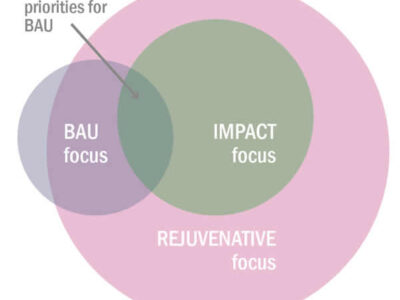Want to find out about our sustainability strategy services?
Many businesses make claims about their sustainability/ESG or CSR, but without a realistic and effective sustainable business strategy, they are unlikely to deliver the gains that more sustainable performance can bring.
So how do you realise the benefits?

What is a sustainable company?
A sustainable company determines its activities, behaviour, products and services through a detailed understanding of the environmental and social context in which it operates. As a result, it works within understood environmental and social limitations and reflects the demands and requirements of society. It also ensures that its impact upon the environment and society is either neutral or positive.
What is a sustainable business strategy?
Sustainable business strategy is the vehicle to support the transformation to a sustainable company from an unsustainable one. Such strategy should establish a pathway likely to support and drive the company as a going concern over the long term (at least 2 decades).
Delivering a strategy requires the following core elements:
- Recognising the strategic context – understanding the global and local sustainability issues that could impact the organisation. Achieving focus on the priority (material) issues that require management.
- A clear sustainability vision – painting a picture of the company’s long-term ambition in the context of relevant environmental, social and economic trends and pressures.
- Plans for action – an implementation strategy containing actions and plans likely to achieve that ambition.
- Timescales – a timescale relevant to the trends identified for material environmental and social issues.
- Communication & reporting – clear, meaningful and consistent messages demonstrating authenticity, transparency and progress to internal and external stakeholders.
Why focus on strategy?
All companies need a strategy to attract investment, whether they are publicly listed or seeking support and capital from private investors or banks. Strategy represents a translation of company capacity and market positioning into a series of actions to be conducted over time to meet stated business objectives.
Essentially, investors and funders analyse a company’s strategy and assess its capability to deliver that strategy. They then make a judgement about how well that company represents a good candidate for investment (e.g. that it will supply the required “return on investment”) over the time frame that the investor requires.
Company strategy is therefore an essential area of focus for anyone who wishes to effect change towards more sustainable corporate behaviour. Strategy is the distilled essence of a company, and if this strategy does not feature, or reflect, a company’s commitment to a delivery of more sustainable business practice then investment drivers will wholly focus upon narrow financial performance, not reflect and reward sustainability actions or respond to the needs and intentions of society.
The challenge of truly strategic sustainability
While most leading companies acknowledge the importance of sustainability, they still struggle to weigh environmental and social issues against economic ones.
At its heart, this discussion is about the ability of sustainability practitioners within companies to make the case for sustainability as a driver of business practice and strategy. While many companies have established programmes of CSR, environmental management and sustainability, these generally run in parallel to the development of mainstream business strategy. As a result, they do not truly influence company direction and decision-making.

Strategy Services
Effective sustainability strategy helps leaders from businesses and NGOs navigate the complexities of sustainability and identify opportunities.
What areas do practitioners struggle with?
Sustainability professionals face a number of challenges:
- Focus: implementation activity (i.e. what companies are actually doing) tends to focus upon the control of sustainability impacts and risk at an operational rather than strategic level. The result being that efforts can be of a small scale and also that benefits achieved through these activities are not explicitly expressed, reinforcing the notion of sustainability as a side issue.
- Ownership and organisation: whilst most company sustainability reports feature statements from the CEO or Chair, and some will also have statements such as “sustainability is in our DNA” (have a look) most business decisions actually pay scant regard to sustainability or only do so if all other things are equal. In addition, unless those with a sustainability responsibility are clearly equipped with the authority to shape and effect plans then sustainability will always be an add-on to the normal business of business.
- Strategy and planning: the idea that sustainability practitioners should be adept at the use of mainstream business strategy and planning tools has been around for a while. However, it is still possible to find business school professors highlighting the possible use of Porter’s 5 Forces (and similar) as sustainability tools as though they were the sole discoverers of a wonderful new pre-sliced dough-based baked comestible product. Nevertheless, there is an important point here, very few of those with dedicated responsibility for sustainability within companies are actually also involved in mainstream business planning and strategy development. Still fewer are practiced in the use of mainstream business management tools and processes for analysis. Therefore, although companies may be investing significantly in these initiatives, sustainability remains a secondary, or parallel, issue within company strategic direction.
- Timescales, risks and costs: in many cases, sustainability initiatives can be related clearly to issues of business risk – especially regulatory and reputational risks. However, standard payback periods within many companies are often too short to pick up clear sustainability price impacts which may occur over longer time horizons. This means that, while the implications of environmental and social trends can clearly be identified over the medium term, the company itself struggles to translate these into risk and costs in the short term.
Overcoming barriers – developing sustainable strategy
A number of steps which can be taken by sustainability and CSR practitioners to ensure that sustainability is understood as a truly strategic issue:
Step 1: Identify and agree on the material (priority) issues which present strategic threats and opportunities for the company.
Step 2: Identify corporate ambition, where does the company plan do be on the scale of corporate evolution?
Step 3: Understand how strategy is already developed within your own company and assess whether sustainability issues are currently considered as part of strategic planning and product development.
Step 4: Establish what processes are used within your own company to manage strategic change. What works; what does not; and why?
Step 5: Ensure that the strategic opportunities and threats posed by sustainability issues are included alongside other strategic business issues that influence strategy.
Step 6: Ensure engagement with key external stakeholders to achieve a broader consensus about what is material to whom and why.
Step 7: Develop responses to all material strategic issues which align with and support your company’s competitive positioning.
Step 8: Develop a clear overall strategic vision integrating social, environmental and economic dimensions.
Step 9: Start to make the investment case to leadership and investors. Sustainability has clear financial and risk benefits, likely to lie somewhere in the following areas:
- Direct impacts upon the performance of capital – where sustainability increases efficiency and reduces costs.
- Impacts upon equity risk profile – where effective risk improves the likelihood of share price stability and growth.
- Influence upon the assessment of drivers of shareholder value – analysis undertaken by investors of the management of risks likely to affect the company’s ability to create shareholder value.
- Intangible value – representing a significant proportion of overall company value, these refer to ‘soft’ issues which do not feature on company balance sheets such as leadership, transparency, intellectual capital, human capital, workplace organization and culture. Sustainability has a significant role in intangible value in terms of reputation, brand value, trust and stakeholder relations.
Sustainability – a strategic business issue
Over the long term, sustainability issues present clear systemic challenges to the continuation of business as usual. Sustainable strategies present a way of changing the overall risk profile of an organisation through mitigating, minimising and designing out potential flaws likely to act as obstacles to business success over the long term.
The tools and techniques for assessing and interpreting the strategic implications of sustainability for organisational success are either well-developed or can be derived by adapting commonly used business management techniques. The critical challenges for companies lie in understanding sustainability as a transformational driver rather than an operational issue and in communicating the financial implications of sustainable behaviour to investors and markets.
DISCOVER MORE | Sustainable Business Strategy
Avoiding strategic greenwashing – why your business strategy must be plausible
Worldwide regulators are tightening up on strategic greenwashing to protect consumers, business and market integrity. As further examples arise there is more, we can learn about what regulators will tolerate and what they require of companies.
Put simply, any leeway for general feel-good …
WEF Global Risks 2023 – What’s new and what’s changed?
While big picture environmental threats of climate change, nature loss and ecosystem collapse remain long term risks, geopolitical instability and the current cost-of-living crisis challenges present emerging challenges to the chance for global consensus and coordinated action.
The WEF (World …
2023 sustainable business trends and challenges – what to watch out for
From avoiding greenwashing to facing soaring business costs, 2023 is set to be a challenging year for most business leaders to navigate.
Regulators, customers and consumers have increasing expectations for good quality, consistent information on sustainability. Communication must be accurate and …
Global Risks 2022
Most major sustainability issues have important risk dimensions for companies – and societies. In many cases these are still not adequately represented in board-level discussion, company risk assessments or registers.
WEF’s Global Risk Report provides a very useful, comprehensive global review and …
Biodiversity – the next crisis?
While we’ve been concerned with action on climate and tied up with Covid19, a larger, related crisis is brewing. Businesses are waking up to the need for action on biodiversity.
Biodiversity is one of many issues organisations should consider when developing (or reviewing) sustainable business …
Transforming the business case for sustainability
In a business context it’s often been necessary to justify why sustainability is important with a business case. While it gets less visibility now, it’s still common to see the symptoms of not having a good business case, or one that’s not widely implemented.
Materiality Matters
Materiality is the difference between a weak sustainability approach and one that’s logical, planned and based upon what’s important. What matters most?
The business case for sustainability – can we make money?
Many people are driven by purpose, the ethical dimension of sustainable business. But all businesses need to make money, we explore where value can be found in sustainable business.








